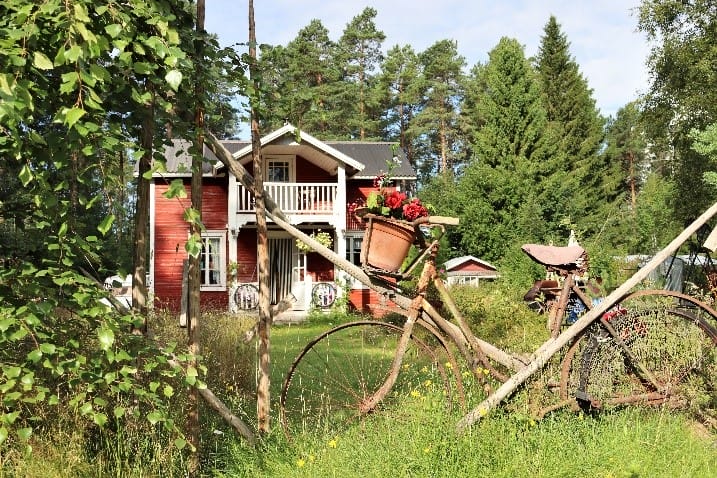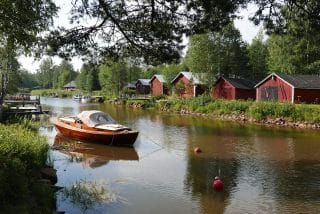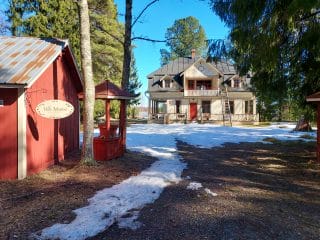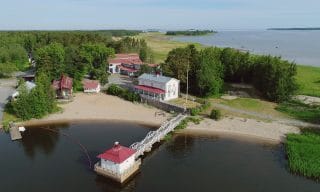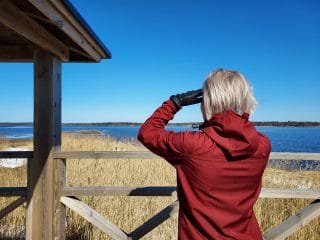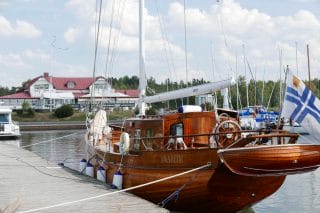There have been ports and harbours along the coast around Kokkola for centuries. Due to land uplift, some ports have been relocated several times. The original harbour was by Sunti near the church hill. At the time of Kokkola’s founding, land had already risen so much that it was decided to relocate the harbour close to the Market Square. The harbour is still at Sunti but closer to the sea. As land continued to rise, port operations were relocated to Halkokari in the 1730s. Later, another relocation took place, this time to Yksipihlaja, which had been used as a winter harbour since the 1700s. Despite land uplift, the bay of Vanhansatamanlahti can still be used by boats, as the old boat routes are maintained by dredging.
Summer houses and villas have been built on the shores alongside ports and harbours. Villa culture came to Kokkola in the 1860s. Wealthy bourgeoisie started building summer houses for their families as fresh air getaways closer to nature. There are several old villa sites in Kokkola National Urban Park. They illustrate increasing wealth in the town and provide concrete examples of the impact of land uplift on people’s lives. Many villas that were built right by the sea are now far away from the shore.
